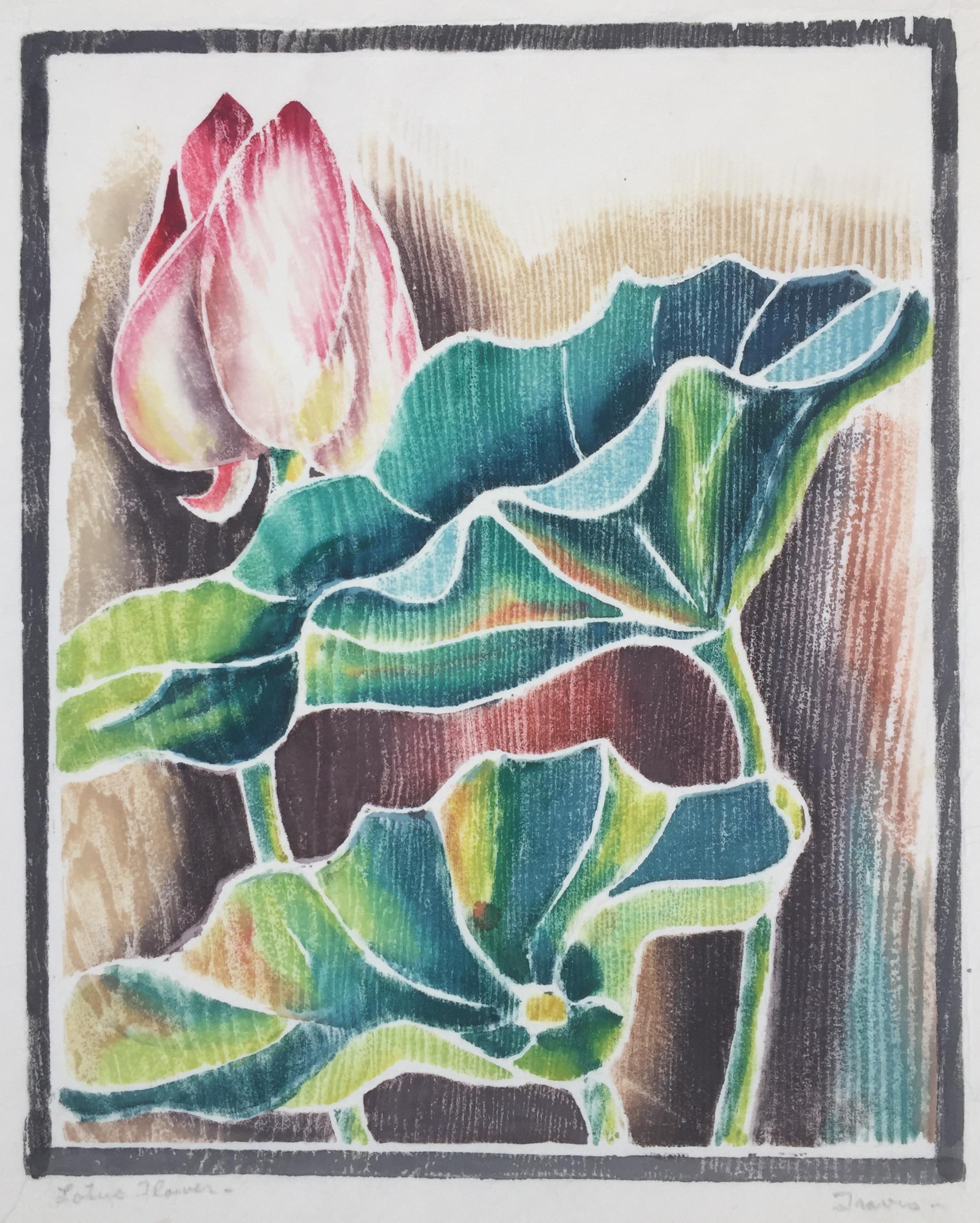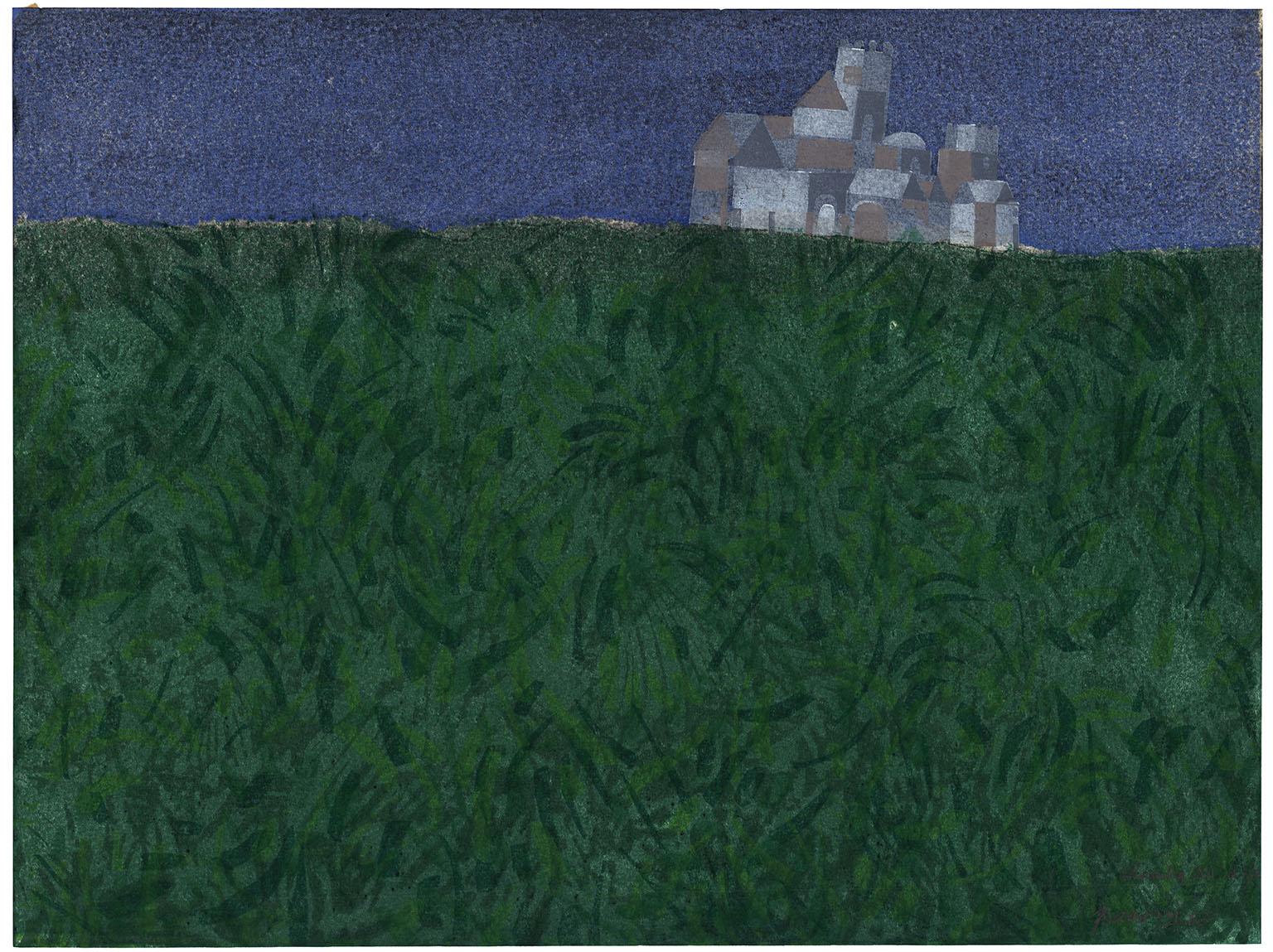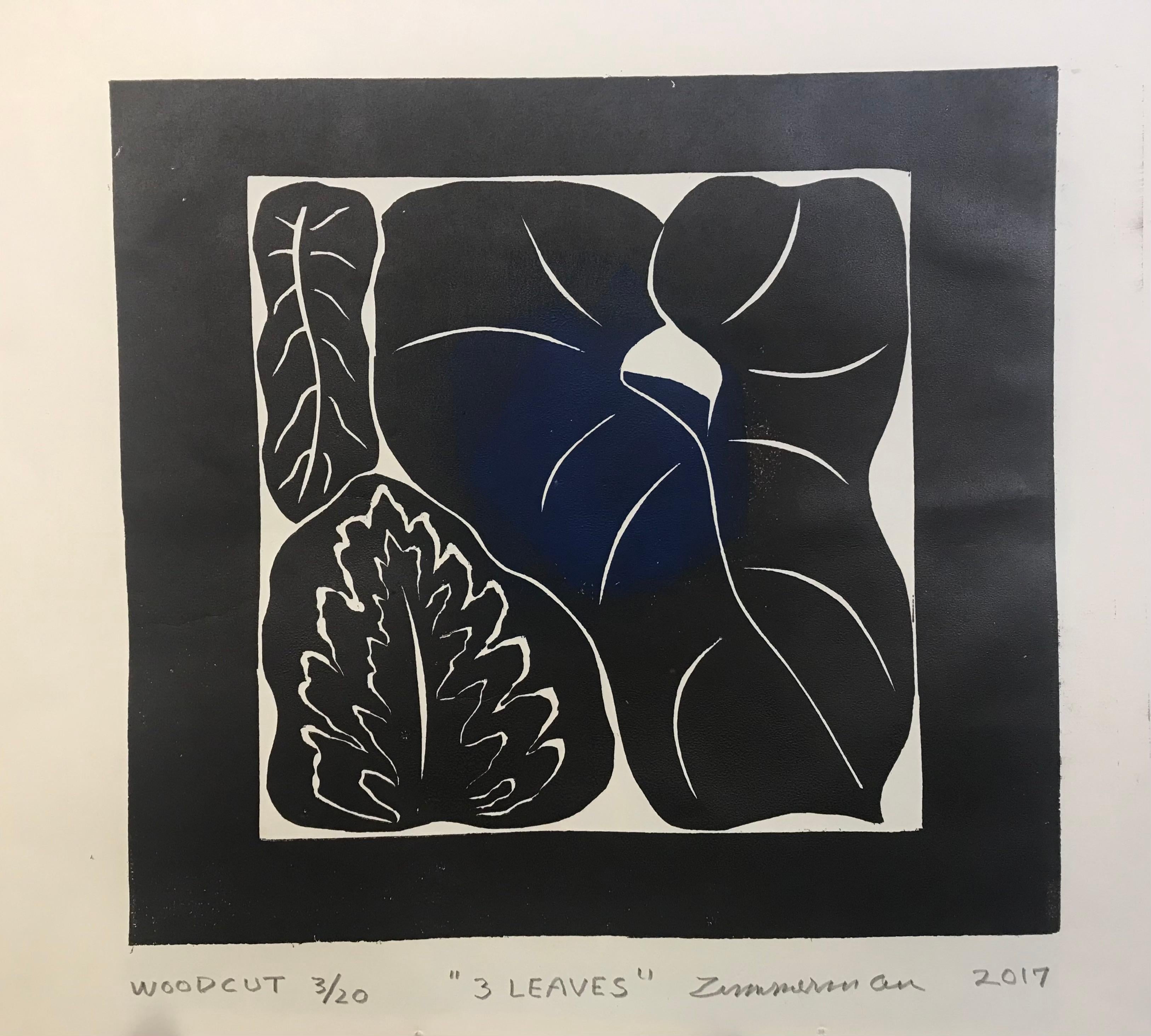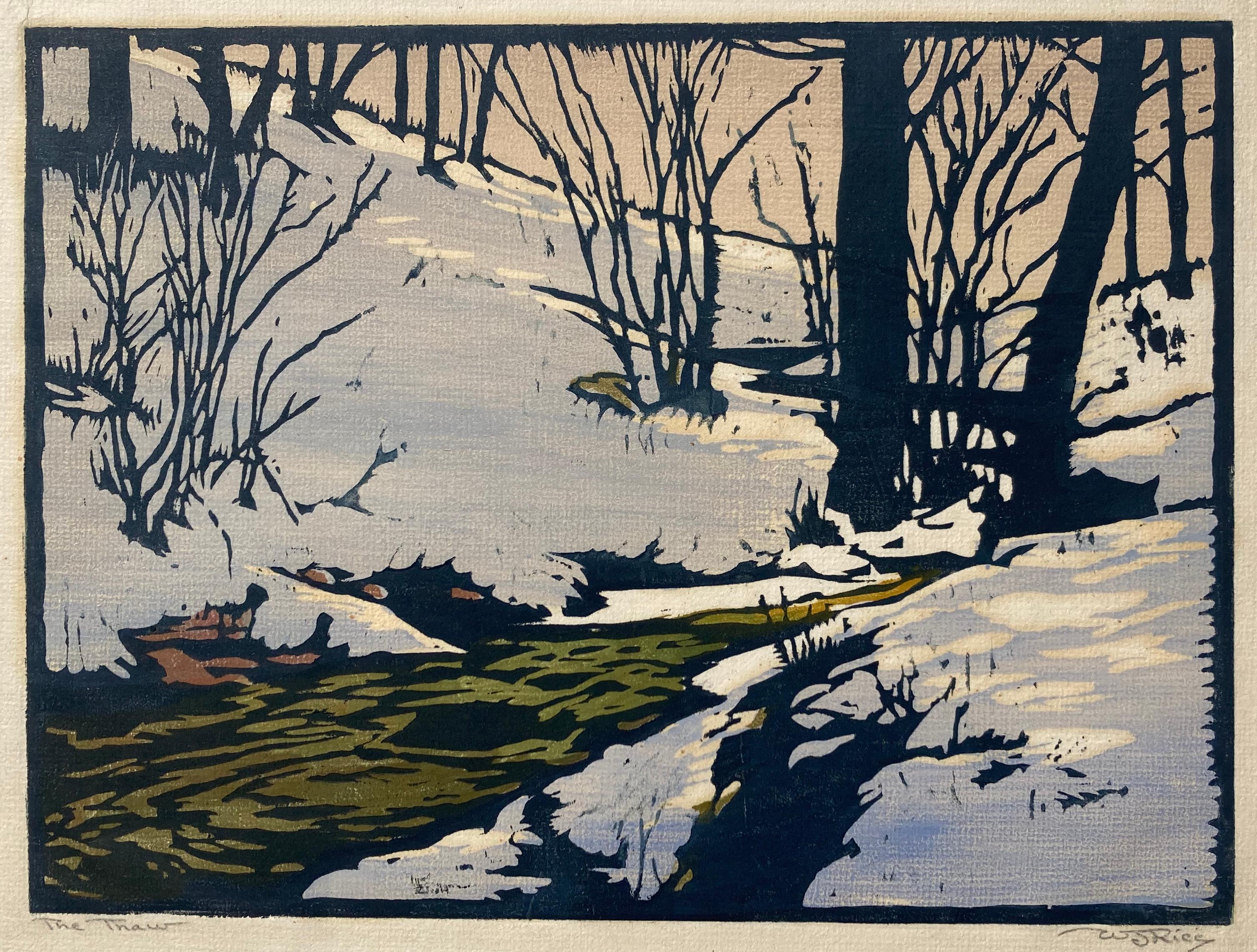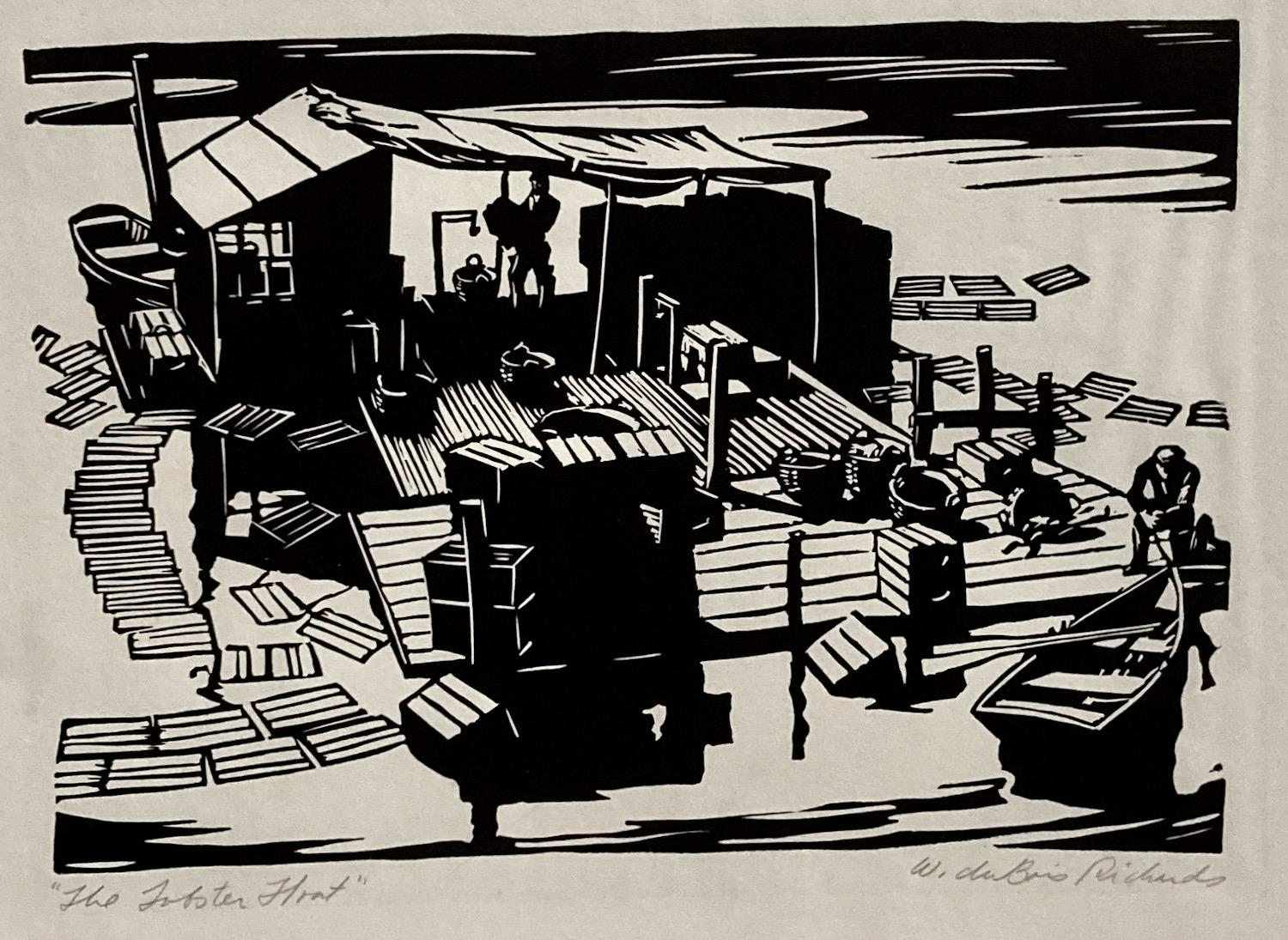Items Similar to Fountain of Sea Horses, Rome — Early 20th Century
Want more images or videos?
Request additional images or videos from the seller
1 of 3
Rudolph RuzickaFountain of Sea Horses, Rome — Early 20th Centuryc. 1915
c. 1915
About the Item
Rudolph Ruzicka, 'Fountain of Sea Horses, Rome', wood engraving, c. 1915. Signed, dated, and titled in pencil. Initialed in the block, lower left. A fine, richly-inked impression, on cream wove paper; the full sheet with margins (7/8 to 2 3/8 inches), in excellent condition. Image size 5 3/8 x 3 7/16 inches; sheet size 9 1/8 x 5 7/8 inches. Matted to museum standards, unframed.
Provenance: this impression Ex. collection Gustave Baumann.
Published by Mrs. Charles Mac Veagh, 'The Fountains of Papal Rome'. 1915 (republished 2007).
ABOUT THE ARTIST
Born in 1883 in Kourim, Bohemia, Rudolph Ruzicka emigrated to Chicago the following year. He started his career as a wood engraver at age fourteen and soon began illustrating in other mediums. He moved to New York City when he was 20, where he worked for the American Banknote Company and then as a free-lance commercial artist. About 1906, he returned to wood engraving, inspired by the Parisian reviews featuring Auguste-Louis Lepere's work. Lepere created a hybrid of European sensibilities and practices and Japanese aesthetics in his wood engravings of Paris views.
Ruzicka’s work also focused on city views, a source of pride to Americans, as was Paris to the French, and Edo (early Tokyo) to the Japanese. The medium of wood-engraving (carving on wood end grain) allows for great precision and intricate detail. Ruzicka’s vision, combining idealized imagery with graphic accuracy, enabled him to render the great architectural monuments of American cities and the more common areas of the urban environment with shared picturesque enchantment. A contemporary critic said of his genre of printmaking: “To be able to see picturesque aspects where other people see nothing is the power of the seer; to convey them to others is the power of the interpretor.” The beautiful compositions and impeccable execution of Ruzicka’s graphic works invite and reward close inspection. The renowned print connoisseur William Ivins observed (and Ruzicka agreed) that his work tended to be “correct in every Bostonian sense of the word, a little dry, and little precise, quite restrained, and just a little backward-looking to the older times.”
Ruzicka's graphic work is in the collections of The Art Institute of Chicago, Carnegie Institute, Library of Congress, Brooklyn Institute of Arts and Sciences, and Metropolitan Museum of Art.
Edited from: James Watrous and Andrew Stevens, American Color Woodcuts: Bounty from the Block, 1890s - 1990s, Elvehjem Museum of Art, University of Wisconsin - Madison, 1993
- Creator:Rudolph Ruzicka (1883-1978, American)
- Creation Year:c. 1915
- Dimensions:Height: 5.38 in (13.67 cm)Width: 3.44 in (8.74 cm)
- Medium:
- Movement & Style:
- Period:
- Condition:
- Gallery Location:Myrtle Beach, SC
- Reference Number:
About the Seller
5.0
Recognized Seller
These prestigious sellers are industry leaders and represent the highest echelon for item quality and design.
Platinum Seller
These expertly vetted sellers are 1stDibs' most experienced sellers and are rated highest by our customers.
Established in 1995
1stDibs seller since 2016
259 sales on 1stDibs
Typical response time: 1 hour
Associations
International Fine Print Dealers Association
- ShippingRetrieving quote...Ships From: Myrtle Beach, SC
- Return PolicyA return for this item may be initiated within 7 days of delivery.
More From This SellerView All
- 'Laguna Cove' — 1930s American ModernismBy Paul LandacreLocated in Myrtle Beach, SCPaul Landacre, 'Laguna Cove', wood engraving, 1935; edition 60 (16 printed), 2nd edition 150 (6 printed), Woodcut Society 200, Wien 247. Signed and titled in pencil. A brilliant, black impression, on cream wove Japan, with full margins (3/4 to 1 3/4 inches), in excellent condition. Archivally matted to museum standards, unframed. This impression is from the edition published for the Twentieth Presentation Print of the Woodcut Society, 1941. Printed by Torch Press, Cedar Rapids. Literature: Reproduced in 'James Swann...Category
1930s American Modern Landscape Prints
MaterialsWoodcut
- Tranquil Harbor (Gloucester, Massachusetts)By Lawrence WilburLocated in Myrtle Beach, SCLawrence Nelson Wilbur (1897-1988), 'Tranquil Harbor' (Gloucester, Massachusetts), wood engraving, edition 55, 1958. Signed in pencil, and signe...Category
1950s American Modern Landscape Prints
MaterialsWoodcut
- 'Hill' — 1930s American ModernismBy Paul LandacreLocated in Myrtle Beach, SCPaul Landacre, 'Hill', wood engraving, 1936, edition 60 (only 54 printed); only 2 impressions printed in a second edition of 150. Signed, titled, and numbered '49/60' in pencil. Wien...Category
1930s American Modern Landscape Prints
MaterialsWoodcut
- 'Taos Placita' — 1940s Southwest RegionalismBy Gustave BaumannLocated in Myrtle Beach, SCGustave Baumann, 'Taos Placita', color woodcut, 1947, edition 125. Baumann 132. Signed, titled, and numbered '20-125' in pencil; with the artist’s Hand-in-Heart chop. A superb, richly-inked impression, with fresh colors, on fibrous oatmeal wove paper; the full sheet with margins (2 to 3 1/8 inches); slight rippling at the left sheet edge, in excellent condition. Matted to museum standards, unframed. Image size 9 5/8 x 11 1/4 inches (244 x 286 mm); sheet size 13 1/4 x 17 inches (337 x 432 mm). Collections: New Mexico Museum of Art, Phoenix Art Museum, Wichita Art Museum. ABOUT THE ARTIST Gustave Baumann (1881-1971) was a renowned printmaker and a leading figure of the American color woodcut revival whose exquisite craftsmanship and vibrant imagery captured the essence of the Southwest. "A brilliant printmaker, Baumann brought to the medium a full mastery of the craft of woodworking that he acquired from his father, a German cabinetmaker. This craftsmanship was coupled with a strong artistic training that resulted in the handsome objects we see in the exhibition today. After discovering New Mexico in 1918, Baumann began to explore in his woodblock prints of this period the light. color, and architectural forms of that landscape. His prints of this period are among the most beautiful and poetic images of the American West." —Lewis I. Sharp, Director, Denver Art Museum Baumann, the son of a craftsman, immigrated to the United States from Germany with his family when he was ten, settling in Chicago. From 1897 to 1904, he studied in the evenings at the Art Institute of Chicago, working in a commercial printmaking shop during the day. In 1905, he returned to Germany to attend the Kunstwerbe Schule in Munich, where he decided on a career in printmaking. He returned to Chicago in 1906 and worked for a few years as a graphic designer of labels. Baumann made his first prints in 1909 and exhibited them at the Art Institute of Chicago the following year. In 1910, he moved to the artists’ colony in Nashville, Indiana, where he explored the creative and commercial possibilities of a career as a printmaker. In 1915, he exhibited his color woodcuts at the Panama-Pacific International Exposition in San Francisco, winning the gold medal. Among Baumann’s ongoing commercial activities was his work for the Packard Motor Car Company from 1914 to 1920 where he produced designs, illustrations, and color woodcuts until 1923. In 1919, Baumann’s printmaking work dominated the important exhibition of American color woodcuts at the Detroit Institute of Arts. Twenty-six of his prints were included, far more than the works of any other artist. A set of his blocks, a preparatory drawing, and seven progressive proofs complemented the exhibition. That same year, Baumann worked in New York and, over the summer, in Provincetown, Massachusetts. His airy images of Cape Cod employed soft, pastel colors and occasionally showed the influence of the white-line woodcut technique. Many of his Chicago artist friends had traveled to the southwest, and Baumann became intrigued by their paintings, souvenirs, and stories of an exotic place named Taos, New Mexico. In the summer of 1918, he spent the summer in Taos sketching and painting before visiting Santa Fe. Paul Walter, the director of the Museum of New Mexico, offered him a studio in the museum's basement. Inspired by the rugged beauty of the Southwest—the vibrant colors and dramatic landscapes of the region became a central theme in his work, influencing his artistic style and subject matter for the remainder of his career. Later in the decade, he traveled to the West Coast and made prints of California landscape. Baumann's prints became synonymous with the Southwest, capturing the spirit of its place in America's identity with a unique sense of authenticity and reverence. His iconic images of desert vistas, pueblo villages, and indigenous cultures served as visual tributes to the region's rich cultural heritage, earning him a dedicated following among collectors and curators alike. A true craftsman and artist, Baumann completed every step of the printmaking process himself, cutting each block, mixing the inks, and printing every impression on the handmade paper he selected. His dedication to true craftsmanship and his commitment to preserving the integrity of his artistic vision earned him widespread acclaim and recognition within the art world. About the vibrant colors he produced, Baumann stated, “A knowledge of color needs to be acquired since they don’t all behave the same way when ground or mixed...careful chemistry goes into the making of colors, with meticulous testing for permanence. While complicated formulae evolve new colors, those derived from Earth and metal bases are still the most reliable.” In the 1930s, Baumann became interested in puppet theater. He designed and carved his own marionettes and established a little traveling company. From 1943 to 1945, the artist carved an altarpiece for the Episcopal Church of the Holy Faith in Santa Fe. In 1952, a retrospective exhibition of his prints was mounted at the New Mexico Museum of Fine Arts. Throughout his prolific career, Baumann executed nearly four hundred color woodcuts. Baumann’s woodcuts...Category
1940s American Modern Landscape Prints
MaterialsWoodcut
- 'The East River', Brooklyn Bridge — Mid-Century Realism, New York CityBy Lawrence WilburLocated in Myrtle Beach, SCLawrence Nelson Wilbur (1897-1988), 'The East River', drypoint, edition 65, 1946. Signed, titled, and annotated 'A. Jones Proof 1946' in pencil. Signed and dated in the plate, lower ...Category
1940s American Modern Landscape Prints
MaterialsDrypoint
- 'The French Farm' — Mid-Century ModernismBy Edward August LandonLocated in Myrtle Beach, SCEdward Landon, 'The French Farm', color serigraph, 1942, Ryan 86. Signed, titled, and annotated 'Edition 50' in pencil. A superb impression, with fresh colors, on cream, wove paper; ...Category
Mid-20th Century American Modern Landscape Prints
MaterialsScreen
You May Also Like
- LOTUS FLOWER - ROEDING PARK - Provincetown StyleBy Mary TravisLocated in Santa Monica, CAMARY TRAVIS (Active 1935 - 40) LOTUS FLOWER ROEDING PARK. c.1935-40 White line color woodcut. Signed and titled in pencil. Small edition. 10” x 8”. Full sheet. tears in upper margin. Travis worked in Berkeley, California and was probably a follower of William S...Category
1930s American Modern Landscape Prints
MaterialsWoodcut
- LOTUS FLOWER - Provincetown StyleBy Mary TravisLocated in Santa Monica, CAMARY TRAVIS (1893-1976)) LOTUS FLOWER c. 1935-40 White line color woodcut. Signed and titled in pencil. Small edition. 9 ¾” x 7 7/8”. Full sheet. Some creasing in the margins. Travis worked in Berkeley, California and was probably a follower of William S...Category
1940s American Modern Landscape Prints
MaterialsWoodcut
- Alhambra XIIBy Antonio FrasconiLocated in New York, NYAntonio Frasconi created the color woodcut entitled “Alhambra XII” in 1963. This piece is signed titled, and dated in pencil. The edition is 12, and paper size is 18 x 24 inches. “...Category
1960s American Modern Landscape Prints
MaterialsWoodcut
- Three leaves (taro) - Landscape Print - Woodcut Print By Marc ZimmermanBy Marc ZimmermanLocated in Carmel, CAMinimal image in black ink on buff rice paper. Taro leaves are a simple form inspiring this woodcut print. Three leaves (taro) - Landscape Print - Woodcut Print By Marc Zimmerman T...Category
2010s American Modern Landscape Prints
MaterialsWoodcut
- THE THAWBy William Seltzer RiceLocated in Santa Monica, CAWILLIAM SELTZER RICE (1873 - 1963) THE THAW c 1915-20 Color woodcut, signed and titled in pencil. Image 8 7/8 x 12 inches, sheet 10 3/4 x 14 3/8 inches. On textured fibrous paper. V...Category
1910s American Modern Landscape Prints
MaterialsColor, Woodcut
- Walter DuBois Richards, The Lobster FloatBy Walter DuBois RichardsLocated in New York, NYOhio-born Walter DuBois Richards (1907-2006) was educated at the Cleveland School of Art. He re-located to New York around 1933 where he had a successful career as a commercial artis...Category
1930s American Modern Landscape Prints
MaterialsWoodcut
Recently Viewed
View AllMore Ways To Browse
Fountain Fineal
Sea Horse
Horse Japan
Horse Japanese
Aged Fountain
Fountains Europe
James A Rome
Wood Landscape Carvings
Antique Engraving Prints Horses
Antique Horse Carvings
Antique Wood Block Prints
Antique Lance
Antique Rudolph
Antique Japanese Wood Block
Japanese Edo Wood Carving
Hybrid 8
Antique Japanese Block Prints
Antique Wisconsin

